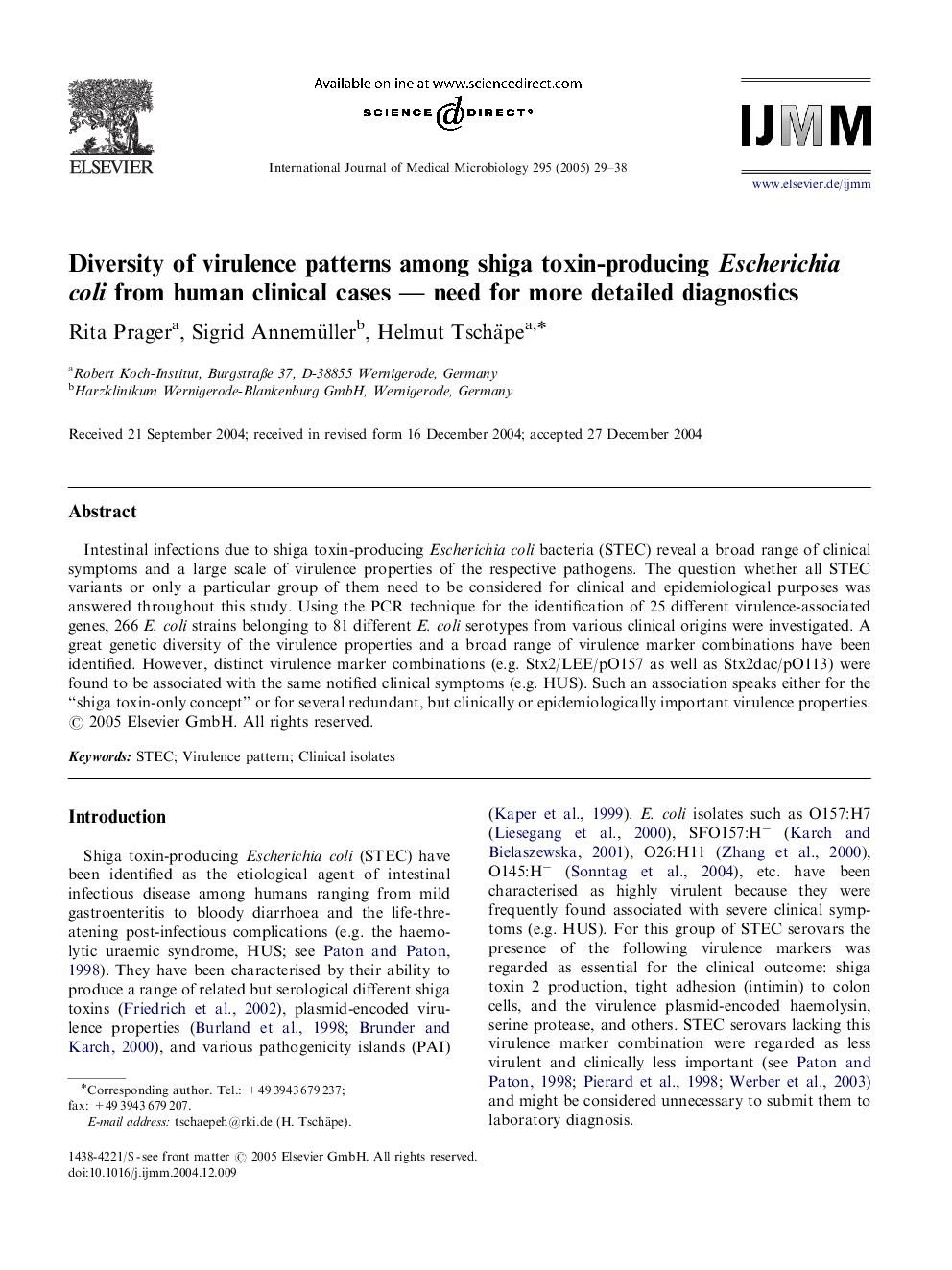| Article ID | Journal | Published Year | Pages | File Type |
|---|---|---|---|---|
| 9899196 | International Journal of Medical Microbiology | 2005 | 10 Pages |
Abstract
Intestinal infections due to shiga toxin-producing Escherichia coli bacteria (STEC) reveal a broad range of clinical symptoms and a large scale of virulence properties of the respective pathogens. The question whether all STEC variants or only a particular group of them need to be considered for clinical and epidemiological purposes was answered throughout this study. Using the PCR technique for the identification of 25 different virulence-associated genes, 266 E. coli strains belonging to 81 different E. coli serotypes from various clinical origins were investigated. A great genetic diversity of the virulence properties and a broad range of virulence marker combinations have been identified. However, distinct virulence marker combinations (e.g. Stx2/LEE/pO157 as well as Stx2dac/pO113) were found to be associated with the same notified clinical symptoms (e.g. HUS). Such an association speaks either for the “shiga toxin-only concept” or for several redundant, but clinically or epidemiologically important virulence properties.
Keywords
Related Topics
Life Sciences
Biochemistry, Genetics and Molecular Biology
Biochemistry, Genetics and Molecular Biology (General)
Authors
Rita Prager, Sigrid Annemüller, Helmut Tschäpe,
